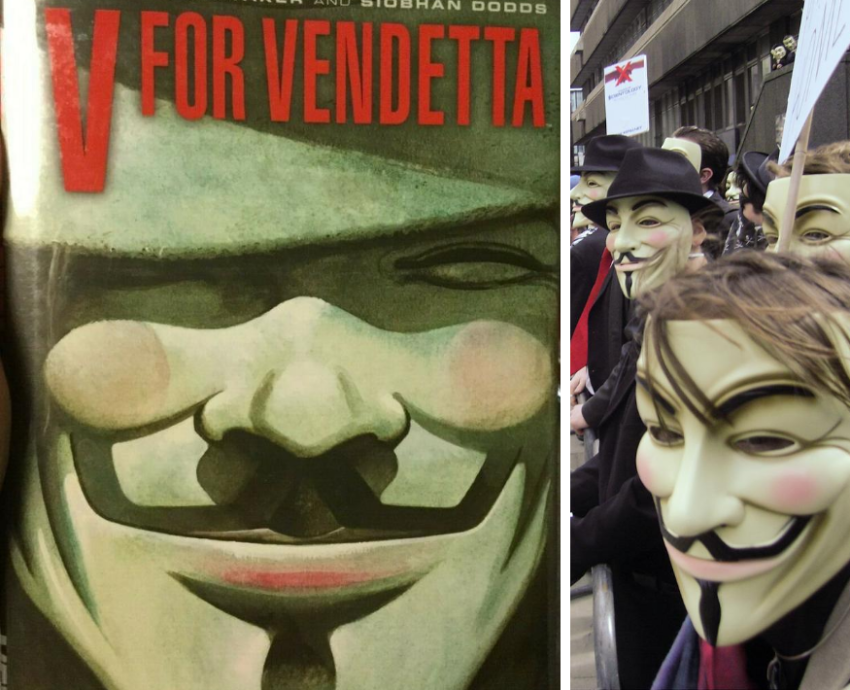
V for Vendetta
Written by Alan Moore
Illustrated by David Lloyd
Vertigo, 1982
V for Vendetta holds the distinction of so far being the only graphic novel to have a direct influence on a political movement. The stylised Guy Fawkes mask of the lead character was first worn by members of the hacker-activist group Anonymous in 2008 during a protest against the Church of Scientology, but have since spread throughout the global protest movement.
English comics author Alan Moore started writing V for Vendetta in the early 1980s as a reaction to the rise of British Prime Minister Margaret Thatcher and United States President Ronald Reagan, and his fears of the growing far-right National Front.
Set in a near future after a nuclear war that has left most of the world in tatters, Britain has escaped the bombs but has fallen under fascist control by the racist and homophobic “Norsefire” party.
Enter “V”, an unhinged, masked anarchist bomber intent on revenge and the establishment of a land of "Do-as-You-Please". V starts by rescuing a young woman, Evey, about to be raped by a gang of secret police, then proceeds to bomb the Houses of Parliament.
The sexual identity of V is ambiguous and, as the back story is revealed, it turns out he/she was imprisoned at a concentration camp and subjected to cruel scientific experiments. V's methodical attacks eventually target the regime's leader, Adam Susan, who obsesses constantly over the all-seeing central computer that analyses a massive network of surveillance cameras.
Illustrator David Lloyd's chiaroscuro and cinematic artwork is dense with information that is as much a part of the story as Moore's text, rich with literary associations.
The morality of V's actions are open to interpretation. Moore was starting to critique the traditional vigilante comic book superhero that so often serves to police a conservative status quo, a theme he would continue in his magnum opus, Watchmen. These works lent the American comics business an intellectual credibility that led to wider readership and increased use of the term “graphic novel”, although Moore just saw it as a marketing ploy.
Many of V for Vendetta's dark visions have proved prescient — pervasive state surveillance, big data and the rise of the far right. In October 2010, Wikileaks founder Julian Assange wore a Guy Fawkes mask at an Occupy London protest before making a speech. A month later, a warrant was out for his arrest. Clearly, comics have the power to ask big political questions and sometimes even inspire people to action.